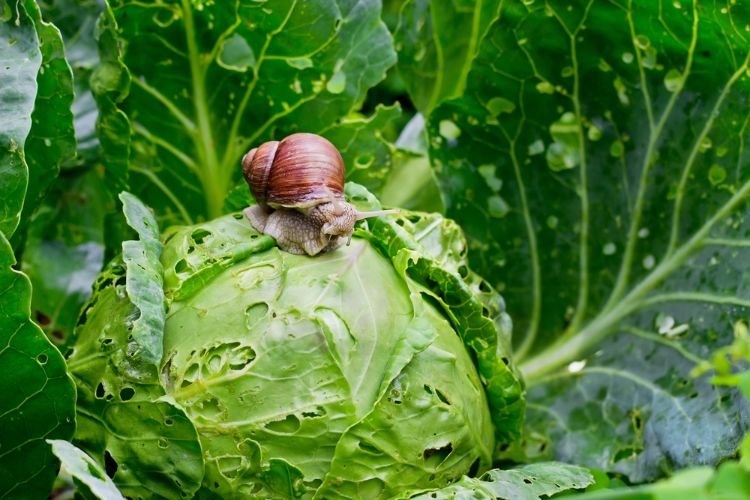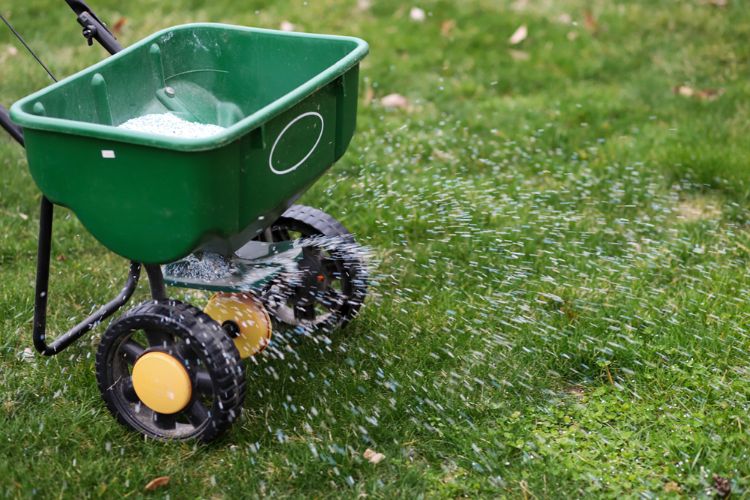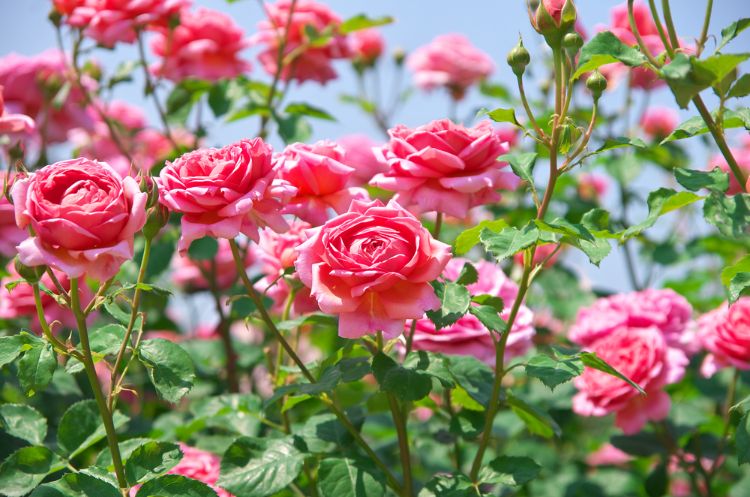Epsom salt is a natural mineral that was first discovered in Epsom, England. People typically use Epsom salt in the bathroom to relieve aches and pains or internally as a laxative, but it is also a garden additive that expert gardeners swear by. It can help you produce lush, healthy plants, flowers and trees.
Epsom salt, also known as magnesium sulfate, works well in the home garden because it gives fertilizer and soil a much needed boost of both magnesium and sulfate. The additional minerals enable plants to receive more nutrition from the soil they are in. This in turn increases the plant’s output.
Advertisement
Want to know more about the ways you can use Epsom salt in your home garden? Keep reading.
1. Produce abundant nightshades

Shutterstock
Many people enjoy growing plants from the nightshade family such as peppers tomatoes, eggplants and potatoes. All nightshades need a lot of magnesium, so that they produce greater yields. Epsom salt also helps improve the flavor of nightshades. To ensure the nightshades you grow in your home garden are abundant and tasty, try adding 1 tablespoon (15 ml) of Epsom salt to your peppers and tomatoes by sprinkling it around the base of the plant. If you want the salt to dissolve more quickly, add it to a gallon (3.8 liters) of water and water the plants with the mixture. You should continue to add the Epsom salt to your plants every two weeks.
2. Nix garden pests

Shutterstock
Garden pests are the worst. You spend a significant amount of time planting something that you enjoy, and the next thing you know, it’s ruined. Luckily, Epsom salt can help with this problem. Epsom salt won’t make snails and slugs wither away like table salt, but it does irritate them. Epsom salt works much like diatomaceous earth to keep unwanted pests at bay. The only caveat about using Epsom salt to deter pests is that it is water soluble, so you will need to continuously reapply it.
3. Make fruit sweeter

Shutterstock
Epsom salt, when added to trees, bushes and vines that produce fruit, boosts the chlorophyll inside the plant. When plants have more chlorophyll, they have more energy. When they have more energy, they produce more sugar. More sugar means sweeter fruit for you to enjoy.
4. Stop transplant shock
When you start plants indoors for outdoor planting later on or move established potted plants to larger pots, sometimes the plants will get shocked and start to die on you. This phenomenon is known as transplant shock and happens because the plants' roots were likely damaged during the transportation process. Epsom salt can help plants overcome transplant shock. If your plants are experiencing transplant shock, feed Epsom salt to them either by sprinkling on the topsoil near the base of the plant and then watering or putting a little salt into the hole or planter you will be planting your plant. Next, cover the salt with a little dirt before planting your plant on top.
5. Keep leaves green

Shutterstock
When plants don’t get their recommended daily amount of magnesium, their leaves start turning yellow. To remedy this common occurrence, feed your plants Epsom salt. Try feeding your plants 1 tablespoon (15 ml) of the mineral per 12 inches (30 cm) of height one time a month.
6. Annihilate pesky weeds

Shutterstock
Only masochists like weeding their gardens. To cut down on weeding time, incorporate Epsom salt into your garden maintenance schedule. You can kill weeds by mixing a couple of cups of the mineral with a gallon (3.8 liters) of vinegar and some liquid dish detergent. Put the mixture in a spray bottle and go to town on any weeds you see. In no time at all, the weeds will die. Be careful not to spray any of this powerful stuff on plants you want to keep, or they will die.
7. Lush lawn fertilizer

Shutterstock
If your lawn isn't lush and beautiful, it probably needs a little magnesium in its life. To perk up grass, add 3 pounds (1.35 kg) of Epsom salt to every 1,250 square feet (116 square meters) of grass and then watering your lawn.
8. Tree stump remover

Shutterstock
Tree stump removal can be costly, but if you don't have the money to get a stump removed, let Epsom salt come to your rescue. Drill holes into the stump and filling in the holes with Epsom salt. In weeks, the stump will begin rotting.
9. Beautiful blooming roses

Shutterstock
Roses are beautiful, but they can be tricky to grow. Epsom salt makes it a little easier. Adding Epsom salt to rose bushes encourages them to produce larger flowers with darker, deeper colors. To incorporate Epsom salt to your rose bush's diet, add it at the time of planting and when flowers are in bloom.
10. Splinter removal power
Splinters are inevitable when you are gardening. Epsom salt can help with that. If you get a splinter when gardening, soak the area that has the splinter in it in 2 tablespoons (30 ml) of Epsom salt and water. That should make the splinter pop out of your skin on its own.
11. "Frizzle top" fighter
In sunny areas where palm trees thrive, one of the most common things to see is palm trees that are yellow at the top. This look, which Best Plants likens to a bad hair day, is called "frizzle top" and due to a lack of magnesium. You can restore your palm trees to health by spraying the crown and base with Epsom salt and water.
12. Cure leaf curling

Shutterstock
Leaf curling is a sure sign of a lack of magnesium in a plant. If the leaves on your plant are curled, amend the plant's soil with 1 tablespoon (15 ml) of Epsom salt.
13. Perky potted plants
Plants in containers go magnesium-deficient faster than in-the-ground plants. To remedy this issue, the site recommends adding 2 tablespoons (30 ml) of Epsom salt to the surrounding soil once a month.
14. Increase nutrient uptake
Epsom salt, when added to the soil around plants, helps them absorb other nutrients more efficiently. In fact, most commercial fertilizers have large amounts of magnesium. By adding plain Epsom salt, you won't have to bother with so much fertilizer.
15. Fancy full ferns
When ferns are yellow and dull-looking, they don't look great. Epsom salt helps ferns and plants similar to ferns, such as elephant ear, have rich, dark foliage. Add 1 tablespoon (15 ml) of Epsom salt to a gallon (3.8 liters) of water and spray ferns and elephant ears to achieve the look.
Advertisement
Epsom salt is incredibly useful in the home garden. In addition to helping plants get more from the surrounding soil, Epsom salt also enhances the flavor of fruits and veggies, keeps leaves green, stops transplant shock and deters pests. Who knew? Now you do!

